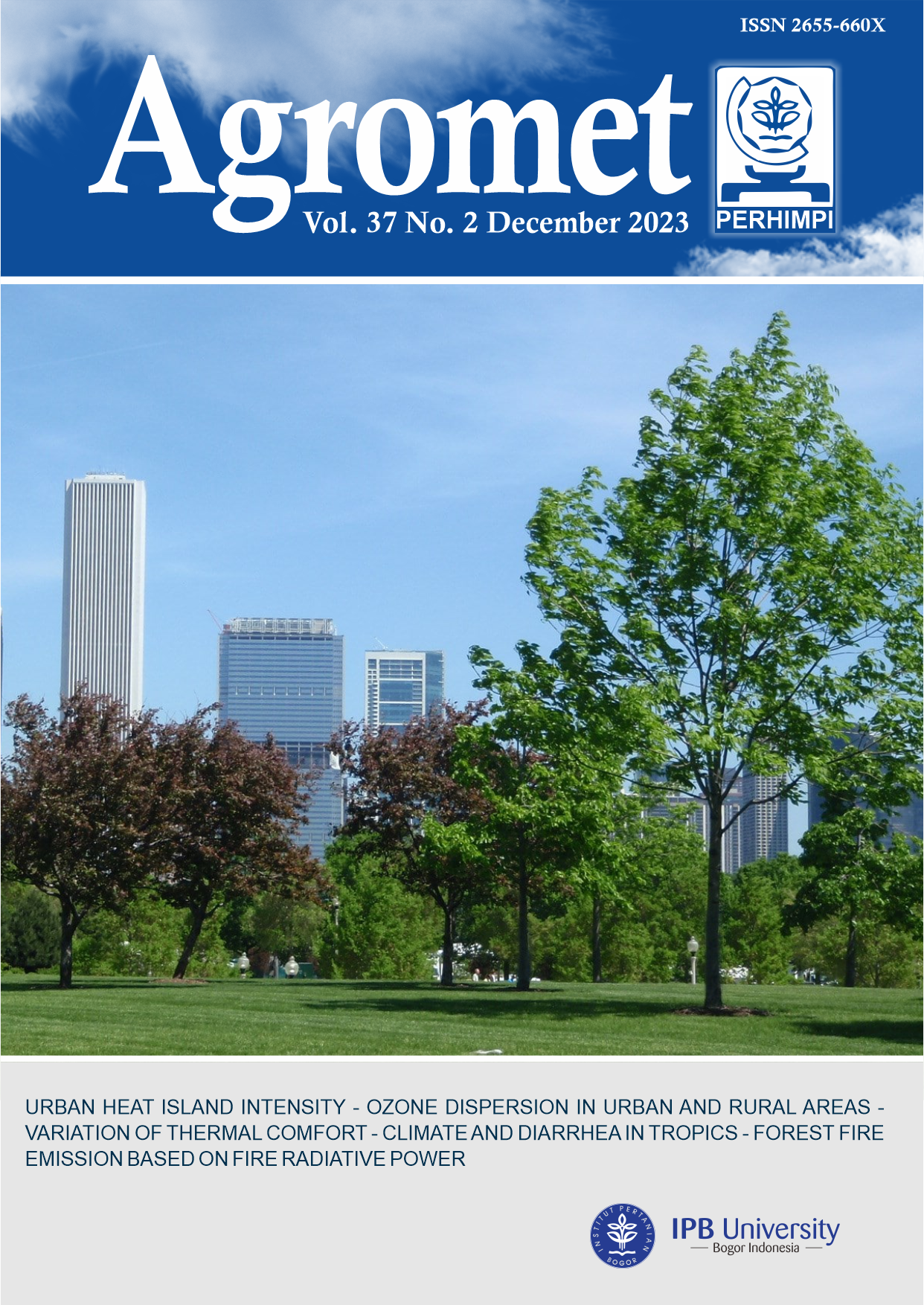Thermal Comfort for various Altitudes and Land Covers in North Sumatra
Abstract
Thermal comfort refers to the suitability of meteorological conditions for
humans with the environment. Temperature is the main meteorological
variable, which determines the thermal comfort as expressed in various
climate indices. This study aims to analysis the distribution of thermal
comfort, and to identify environmental factors influencing the comfort
situated in North Sumatra, Indonesia. We applied the Universal Thermal
Climate Index (UTCI) to determine the heat stress level for 2011 - 2020. The
higher UTCI value indicates more uncomfortable conditions related to the
higher heat stress. The results showed that the average value of UTCI in North
Sumatra was categorised at moderate heat stress. Densely urbanised area in
the eastern region contributed to high heat stress, whereas mountainous
areas in central to west regions were at low level. Our findings found that
climate season affected the distribution of heat stress level. The low heat
stress occurred in December-February, while high heat stress happened in
June-August. Further, findings revealed that altitude and land cover have
contributed to UTCI variation by more than 75% variance.
Authors

This work is licensed under a Creative Commons Attribution-NonCommercial 4.0 International License.

